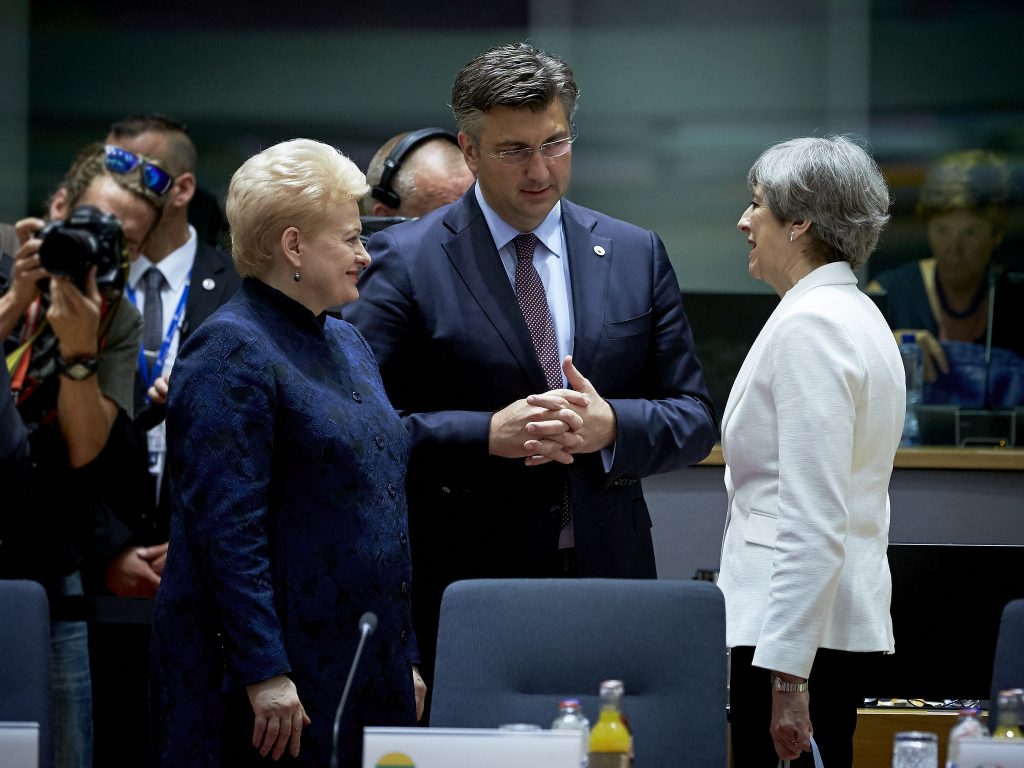On 26 June, the UK Government published a policy document setting out its offer to citizens of the 27 European countries taking part in the Brexit negotiations.
The Government have outlined both the arrangements it hopes the EU will offer British citizens living in EU countries, and the rights it will offer EU nationals living in the UK after Brexit. The proposals have been long-awaited and much discussed. So, what are they?
What the UK has offered up

Image Credit: European Council / Flickr
In the introduction to the document, the Government says that their first priority is to reach agreement on the post-exit position of EU citizens living in the UK, and UK nationals living in other EU countries. They add: “EU citizens are valued members of their communities here, and we know that UK nationals abroad are viewed in the same way by their host countries.”
They then go on to set out the following proposals:
- EU citizens living in the UK for 5 years will be entitled to apply for ‘settled status’. This will allow them to access public benefits, healthcare and education. It won’t come with an entitlement to vote (EU citizens were previously entitled to vote in local elections).
- Family members of EU citizens who arrive in the UK before the UK’s withdrawal from the EU will be allowed to apply for ‘settled status’ on the same terms as EU citizens. Those arriving after Brexit will have to apply to join their EU family member on the same terms as the relatives of British citizens (meaning that income requirements may apply).
- EU citizens and their family members will have to apply for a ‘residence document’ to confirm their status in the UK.
- EU citizens who arrived in the UK before the ‘cut-off date’ (as yet to be determined) but who have not lived here for 5 years will be given ‘temporary status’ to remain until they reach 5 years and can apply for ‘settled status’.
- EU citizens who arrived in the UK after the ‘cut-off date’ will be allowed to stay for a temporary period but, after that, will have to apply to remain under whatever immigration rules exist at the time.
- There will be a two year grace period between the date of Brexit and the date on which it will become mandatory for EU citizens and their family members to have a ‘residence document’.
- These rights won’t be adjudicated upon by the European Court of Justice.
What’s the EU’s view on all this, then?
 In their policy document, the UK was responding to the other countries’ – also known as the EU27 – position, which was published on 12 June. The main proposals of their offer are that:
In their policy document, the UK was responding to the other countries’ – also known as the EU27 – position, which was published on 12 June. The main proposals of their offer are that:
- EU citizens in the UK, and UK citizens in the EU, will retain the level of protection they currently have when Brexit happens.
- These rights include the right to permanent residence after 5 years.
- These rights will be given to those living in the relevant country on the date of withdrawal.
- Current and future non-EU family members will retain their rights to join their EU-relative living in the UK (and vice versa).
- These rights will be adjudicated upon by the European Court of Justice.
Timeline: how did we get to this stage?
23 June 2016 – The British public vote by 52% to 48% to leave the EU.
13 October 2016 – The European Commission reject suggestions by the UK Government that negotiations could commence (including regarding the rights of EU citizens in the UK) before Article 50 is triggered and the UK formally gives notice to the EU of its intention to leave the EU.
26 January 2017 – First reading of the European Union (Notification of Withdrawal) Bill in the House of Commons. The bill’s purpose is to give the Prime Minister the authority to trigger Article 50 and the terms on which she may do so.
1 March 2017 – The House of Lords votes in favour of an amendment to the bill which would guarantee the rights of EU nationals in the UK without waiting for reciprocal assurances from the EU27 regarding the rights of UK citizens living in EU countries.
13 March 2017 – The House of Commons reject the Lords amendment to guarantee the rights of EU nationals in the UK.
16 March 2017 – The European Union (Notification of Withdrawal) Act 2017 receives Royal Assent without the amendment described above.
29 March 2017 – The UK Government triggers Article 50, so giving formal notification to the EU27 of its intention to leave the EU. This means that a deal must be negotiated within two years otherwise the UK will depart on World Trade Organisation terms (i.e. without a deal and with mandatory tariffs).
12 June 2017 – The EU27 publish their proposal regarding what should happen to EU nationals living in the UK and UK nationals living in the EU after Brexit.
26 June 2017 – The UK publishes its proposals regarding the status of EU nationals in the UK after Brexit.
What happens next?
All this is just part of the negotiations over the rights of EU nationals in the UK and the rights of British citizens in EU countries, which will continue for some time. The timetable on which the negotiations will run is the one initially proposed by the EU27 after David Davis, the Brexit Secretary, acceded to EU’s plan on the first day of the Brexit negotiations. It means that talks of a trade deal can’t begin until the separation agreement has been finalised. The talks will be conducted in cycles of four weeks with a progress report published at the end of each month. We’ll be keeping you updated on key developments.
Want to know more about this kind of stuff?
- Read about freedom of movement after Brexit.
- Learn more about EU rights post Brexit.
- Read about what Brexit might mean for human rights.






